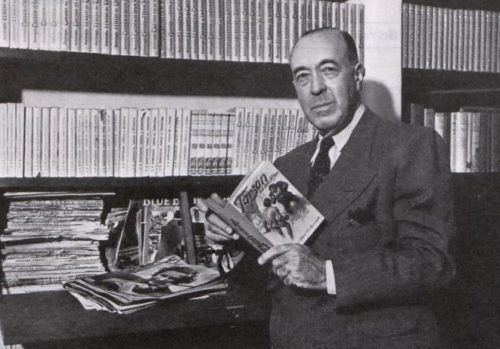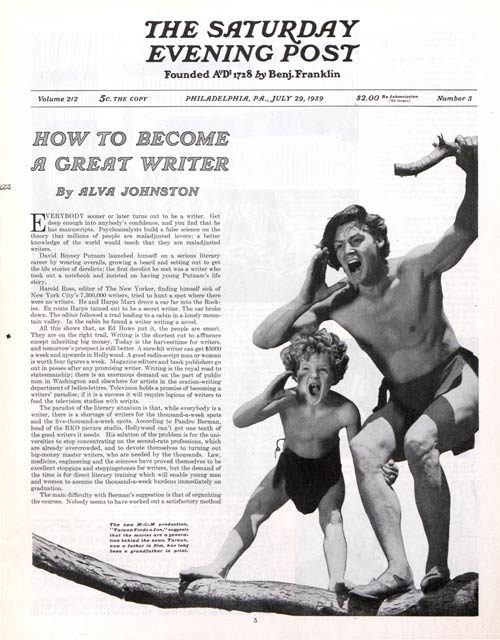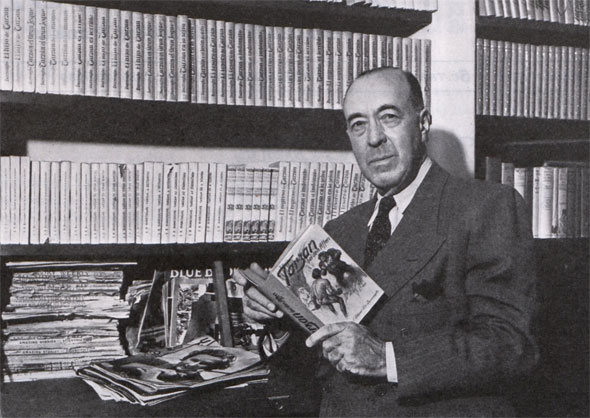The Unlikely Superhero of the Jungle

A century ago, the country’s hottest — and unlikeliest — action star was Elmo Lincoln in the role of Tarzan. Tarzan of the Apes premiered at New York’s Broadway Theatre 100 years ago on January 27, 1918.

To mimic the indeterminate African jungle of Edgar Rice Burroughs’ story, the film was shot in the swamps of Louisiana. Certain scenes were filmed in Brazil, such as the movie’s opening shots of lions, wild boars, snakes, and alligators. When it came to the apes responsible for raising the orphaned Tarzan, some extras were hired from the New Orleans Athletic Club to don monkey costumes and swing from the trees.

Turner Classic Movies’ Leonard Maltin called the film a “surprisingly watchable and straightforward telling of the Greystoke tale, though Lincoln looks like he’s about fifty years old, with a beer belly to boot.” Elmo Lincoln had a heftier physique than the 1930s and ’40s Tarzan played by Olympic swimmer Johnny Weissmuller, but he reprised his role in two more movies (The Romance of Tarzan and The Adventures of Tarzan). Lincoln was never again able to achieve film stardom, however, as he was thereafter relegated to small parts.

Edgar Rice Burroughs, the author of the wildly successful books, was an unlikely sensation himself. As our own Jeff Nilsson points out in “How Tarzan’s Author Did It All Wrong, and Got It Right,” Burroughs’ stories about the lord of the jungle broke countless literary and marketing rules, and they were filled with plot holes and leaps in logic. If Tarzan’s self-taught literacy is plausible, perhaps it follows that he could travel through time to fight medieval knights or Roman gladiators.
The 1939 profile of Burroughs in this magazine, “How to Become a Great Writer,” detailed Burroughs’ business failures that ultimately led him to sleepless evenings scrawling adventure stories in his apartment. The author’s imaginative writing seemed to benefit from its lack of accurate detail: “He had located his first novel on Mars because nobody knew the local color of that planet or the psychology of the Martians, and nobody could check up on him.” The same was true for Burroughs’ unspecified apes of the Tarzan series, although most have interpreted the anthropoids to be gorillas.
Burroughs seemed so ill-suited to his literary fortune that reporter Alva Johnston gave a revised list of tips for writers hoping to mimic the Tarzan-creator:
- Be a disappointed man.
- Achieve no success at anything you touch.
- Lead an unbearably drab and uninteresting life.
- Hate civilization.
- Learn no grammar.
- Read little.
- Write nothing.
- Have an ordinary mind and commonplace tastes, approximating those of the great reading public.
- Avoid subjects that you know about.
Even though he was no Oscar Wilde or Noel Coward, Burroughs created one of the most recognizable characters of the 20th century. Tarzan has appeared in movie theaters about 100 times, most recently in the form of Alexander Skarsgård in 2016. Given another century, the ape-raised warrior could grace the silver screen again and again, a far cry from his pulp fiction beginnings.

How Tarzan’s Author Did It All Wrong, and Got It Right

You’re working on the Great American Novel, and following all the best advice to new writers. You read widely from the great books. You study the rules of grammar and effective composition. You write about what you know. You write, revise, and write more. And you’re prepared to endure years of obscurity before your work gets popular.
Of course, you can completely ignore all these rules and still succeed. Edgar Rice Burroughs proved it. Without trying, he broke nearly every conventional rule for achieving literary success. He didn’t study composition or do much practice writing. He didn’t read widely. He didn’t even want to be an author.
Burroughs grew up with dreams of a military career, but when he applied to West Point, he failed the entrance exam. He enlisted in the army but was soon discharged for medical problems. For years, he drifted between jobs, selling cattle, managing an office, running a store, and mining for gold among other unsuccessful endeavors. He only started writing magazine fiction because he was desperate to earn a little money.
In 1911, he submitted an adventure story about life on Mars to All-Story, a pulp magazine. When it was accepted, he turned out two more in the same vein. And then he wrote Tarzan of the Apes.
Rather than writing about what he knew, Burroughs set his adventure-fantasy in Africa, a continent he only knew from a single book he’d read. Yet his ignorance of the country didn’t reduce the story’s appeal when it was published in 1912.
Burroughs soon followed up on his jungle hero with The Return of Tarzan. Before his death in 1950, he published 22 more titles in the Tarzan series. Between these books, he also wrote over 45 other novels, most of them set in outer space or the Wild West. They helped make Burroughs a wealthy man, but they were never as successful as the Tarzan series.
Burroughs began to exploit the public’s enthusiasm for his jungle hero despite the advice of experts. They warned him that he would over-market his character and the public would tire of Tarzan. But Burroughs ignored them and licensed his character for simultaneous use in comic strips, movies, and merchandise. Once again, he proved the experts wrong. Instead of diluting the appeal, mass-marketing Tarzan only made the character even more popular.
We’ve come a long way since Tarzan was the most popular hero of the day. Other characters have arisen to crowd him off the center stage of popular culture. This year, as he turns 113 years old, he probably wouldn’t seem impressive if you stood him in a lineup with today’s superheroes. But don’t let his lack of cape and skin-tight costume fool you. Modern superheroes, and their creators, owe their livelihood to Tarzan. He was a major turning point in popular fiction, and he made a new generation of do-gooders possible.
Before his time, the heroes in adventure novels were drawn from an established cast of chivalrous characters. They might be noble cowboys or soldiers, but just as often they were roguish characters who lived on the edge of society: outlaws, pirates, or detectives. But all heroes, if they existed on planet Earth, had to fight the usual villains with conventional weapons. Adventure stories had to stay within the fictional boundaries that readers knew.
Tarzan changed the rules for heroes just as Burroughs changed the rules for writing bestsellers. His jungle hero wasn’t limited to traditional strength. Raised by apes, Tarzan had developed incredible power. He could fight all manner of dangerous animals, including fantastic creatures and dinosaurs.
His African locale also opened new possibilities for villains. Tarzan fought slave traders (Tarzan Triumphant), mad scientists (Tarzan and the Lion Man), communist plunderers (Tarzan the Invincible), homicidal cult (Tarzan and the Leopard Men), and German soldiers in World War I (Tarzan the Untamed). And in a creative leap that better writers might have advised against, Burroughs dropped him into forgotten colonies of people lost in time, so he could fight medieval knights (Tarzan, Lord of the Jungle) and Roman gladiators (Tarzan and the Lost Empire).
As long as he was rewriting the rules, Burroughs could expand the realm of the possible. He made Tarzan implausibly smart. For example, Tarzan taught himself to read English from a book, even though no one had ever explained what a book was. In fact, he hadn’t even heard human speech when he learned to read. But then, there had never been a hero like Tarzan. And once readers got pulled into the book, they wouldn’t stumble over such impossibilities.
Burroughs’ great hero may have faded into the background of popular characters, but he is never forgotten. The character has appeared in about 100 motion pictures, not counting the several Tarzan television programs. No doubt there’ll be another Tarzan movie in the future. Perhaps it could be another Disney animated feature; the director of the wildly popular Frozen recently declared that Tarzan was the brother of his movie’s main characters.
Modern readers who pick up a Tarzan book for the first time might find Burroughs’ style a little dated. But he may also note the similarity between Burroughs’ hero and another orphan who grew up to wage a solitary, unbound-by-rules war on evil. The resemblance isn’t coincidence: Without Tarzan, there could be no Batman.